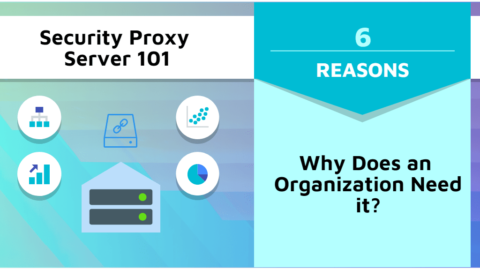Ransomware Attacks: A Threat That’s Real
Thirty years have passed since the very first of many ransomware attacks. While the combination of a creative human mind and new technologies has helped create working cybersecurity solutions against one of the nastiest cyberattacks in the world, different ransomware types are still a menace capable of destroying both private and corporate lives.
Table of Contents
Ransomware works by encrypting the user’s data, making it unreadable. If a user wants their data back, a ransom must be paid. However, nothing guarantees you’ll get your files even if you agree to pay. In most cases, the attacker flees without giving you the key to deciphering your computer or infected files.
We can agree that prevention is the best remedy against ransomware. A well-established and secure IT infrastructure is a must, especially if you run a corporate network full of clients’ and business’ sensitive data whose theft might threaten to affect your future.
Keep reading to learn more about ransomware, the most common ransomware types, and the best cybersecurity solutions to prevent it.
How Do Ransomware Attacks Work?
Ransomware is based on asymmetric encryption, a type of cryptography that uses a pair of keys to encrypt and decrypt files. Once the ransom is paid, the attacker is supposed to give the user the private key, allowing them to unlock their files and access them again. However, that’s not always the case. Even though it’s impossible to decipher your files without the key, it’s not recommended to pay the ransom either – the keys to some older versions of ransomware are possible to break, as many antivirus programs have developed that option.
Ransomware can enter the system through various channels – downloading files from shady websites, email scams, and targeted attacks. Once exploited, ransomware starts encrypting the victim’s valuable files, including Word documents, images, databases, and programs containing confidential information.
But that’s not all.
Ransomware can spread very quickly, exploiting other vulnerabilities and potentially infecting the entire organization’s network and systems. The next step toward recovering the files lies in paying the ransom, typically within 24-48 hours, in cryptocurrency.
Why is Ransomware Spreading so Quickly?
Malware kits are available anywhere, allowing even non-tech-savvy thieves to use the latest encryption methods to take over the victim’s network. Anyone who wants to employ ransomware with filthy end goals may consult a growing ransomware marketplace and get a malware kit from malware authors, who profit by requesting a cut in ransom processes.
Besides, the use of the latest technologies and the companies’ tendency to neglect cybersecurity allow for more efficient ransomware employment, which is now capable of encrypting the entire disc instead of particular files on the user’s device.
Which are the Most Common Ransomware Types?
No one can say the exact number of ransomware that emerge every day, but there are two main types of this insidious cyberattack – crypto-ransomware and locker ransomware.
Crypto-ransomware works by encrypting the user’s files, making them unreadable and unusable. It’s a more frequent form of ransomware cybercriminals use to generate income, as the solution for data recovery is paying the ransom. In most cases, there is a deadline the victim must meet if they want their files back.
On the other hand, locker ransomware aims to lock the user out of their device. Instead of their valuable files, the users face the entire system hijack. To get it back, they must pay a ransom within the deadline set by the attacker.
Other common forms of ransomware are the following:
- Bad Rabbit
- CryptoLocker
- CryptoWall
- CTB-Locker
- Jigsaw
- And more.
Keep in mind that new forms of ransomware arise every day, and each of them is worse than the previous. For that reason, it’s essential to reinforce your system and mitigate the risk of a cyber threat that could put your company or personal life at risk of being exposed to unreliable sources.
And that leads us to the following section – ransomware prevention.
How to Prevent Ransomware Attacks?
You can protect your network from various types of malware by implementing the latest anti-ransomware cybersecurity solutions and being careful when exploring the web. For instance:
1. Install the Latest Antivirus and Anti-Ransomware Program
Antivirus software has always been one of the most viable cybersecurity solutions. The most recent programs feature the most advanced technologies like content filters and virus scanners, which allow you to detect and block the threat before it makes any changes to your system. By implementing cutting-edge antivirus software, you can reinforce your system security and do your job with peace of mind. Besides high-end endpoint solutions, you can enjoy free versions that provide a stellar user experience and next-level protection from the most dangerous forms of cybercrime.
2. Avoid Unknown USB Sticks
USB sticks are convenient for transferring malicious software, including ransomware, into a system. For that reason, cybercriminals leave infected devices in public places, hoping to trick someone into using them. Therefore, never use USB sticks from unknown sources, as it may be a way to let the attacker lock your system.
3. Don’t Open Suspicious Email Attachments
Ransomware is widely spread through email attachments. If the sender’s email address seems suspicious, ensure you delete the message immediately – if you open the attachment containing ransomware instead, it will be executed automatically on your device.
4. Use VPN
If you’re using a public Wi-Fi network, it’s recommended to encrypt it with a VPN. Virtual Private Network will keep your computer safe from network vulnerabilities and unauthorized access to your sensitive data, which comes in handy for online transactions or sharing personal files.
5. Ensure Your Systems are Up to Date
Obsolete software versions or false licenses expose your system to various kinds of vulnerabilities. For that reason, make sure your programs are up to date, containing the latest security patches. That way, attackers will find it more challenging to find gaps in your system protection.
Final Thoughts on Ransomware Attacks
At the end of the day, your system’s security is in your hands. Perform careful actions, avoid suspicious sites and email attachments, and never trust a stranger with a USB stick. All these “amenities” open the door to cyber threats and advanced forms of ransomware no one can deal with.
Backups can save you from the total loss, but you cannot rely on them entirely. If cybercriminals encrypt them, as well, you can say goodbye to your files. Remember that you cannot have too many security measures – be careful, and ransomware will stay away from you!
Infographic


With more than 20 years of progressive experience as Program Manager and Project Manager had led complex IT projects/programs in a wide variety of industries in America, Latin America & Italia.
Mario Bisson Andini is an advanced Program Manager who is the founder of Bisson Training.










